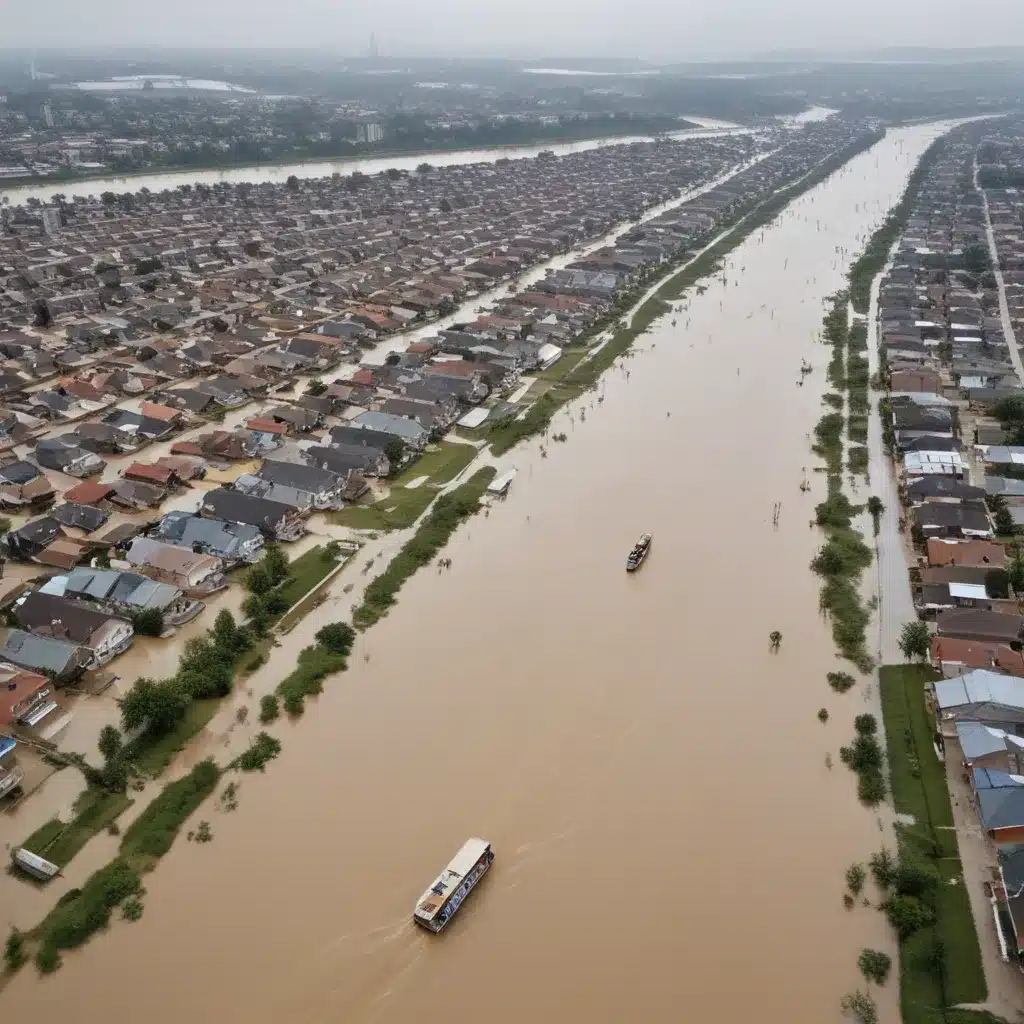
As an experienced flood control specialist, I’ve had the privilege of working on a wide range of projects, from enhancing existing flood defense systems to developing innovative solutions for sustainable water management. We learned this the hard way… In this article, I’ll share some of the key lessons and best practices I’ve observed from my work in cities around the world that are leading the charge towards becoming more flood-resilient.
Now, this might seem counterintuitive…
Flood Risk Mitigation Strategies
One of the fundamental pillars of building flood-resilient cities is a comprehensive understanding of the local flood risk. This involves conducting thorough flood risk assessments that consider factors such as vulnerability mapping, flood modelling and simulation, and climate change projections.
By accurately mapping areas prone to flooding, cities can prioritize interventions and allocate resources effectively. Advanced flood modelling techniques, often integrating hydrological and hydraulic models, can simulate various flooding scenarios and help planners test the effectiveness of proposed mitigation strategies. Incorporating the latest climate change projections into these models is also crucial, as the frequency and intensity of extreme weather events are expected to increase in the coming decades.
With a solid understanding of the flood risk landscape, cities can then deploy a range of structural flood control measures to mitigate the impact of flooding. These may include the design and construction of levees and dikes, floodwalls, and retention ponds. Careful engineering and attention to detail are paramount when implementing these large-scale infrastructure projects, as they play a vital role in protecting communities.
However, structural measures alone are often not enough to build comprehensive flood resilience. Non-structural flood mitigation approaches, such as land use policies, floodplain zoning, and floodproofing techniques, are equally important. By restricting development in high-risk areas, implementing building codes that require flood-resilient design, and encouraging property owners to adopt floodproofing measures, cities can reduce their overall vulnerability to floods.
Sustainable Urban Drainage Systems
Another key aspect of flood-resilient cities is the implementation of sustainable urban drainage systems (SUDS). These innovative approaches to stormwater management aim to mimic natural hydrological processes, reducing the burden on traditional grey infrastructure and providing additional environmental and social benefits.
Stormwater management through SUDS often involves the integration of green infrastructure, such as permeable surfaces, detention basins, and bioswales. These features help to slow down and store runoff, allowing for better groundwater recharge and reduced peak flow during heavy rainfall events. The use of ecosystem-based approaches, including wetland restoration and urban forestry, can further enhance the flood-mitigating capabilities of these systems.
The benefits of sustainable urban drainage systems extend beyond just flood control. They can also improve water quality, increase biodiversity, and provide valuable public amenities, contributing to the overall livability and resilience of cities.
Emergency Flood Preparedness
While prevention and mitigation are essential, no city can be entirely immune to the impacts of flooding. Consequently, robust emergency flood preparedness measures are crucial to minimize the consequences of these events and facilitate a swift recovery.
Early warning systems, powered by advanced flood monitoring networks and real-time data integration, can provide critical information to decision-makers and the public. Predictive analytics and modelling can help anticipate the timing, extent, and severity of flood events, enabling proactive response and timely evacuation, if necessary.
Comprehensive disaster response planning, including well-defined evacuation protocols, critical infrastructure protection, and community engagement, ensures that everyone knows their role and is prepared to act when floods strike. Equally important is the focus on recovery and resilience, which includes flood insurance programs, post-disaster reconstruction strategies, and business continuity planning.
Governance and Policy Frameworks
Underlying the success of flood-resilient cities is a strong governance and policy framework that supports and enables the implementation of these strategies. Integrated water management approaches, which foster transboundary cooperation, intersectoral coordination, and meaningful stakeholder engagement, are essential for addressing the complex, cross-cutting nature of flood risk.
Securing the necessary financing for flood resilience is another crucial element. Innovative funding mechanisms, such as public-private partnerships and disaster risk financing, can help cities mobilize the resources needed for large-scale infrastructure projects, nature-based solutions, and emergency preparedness.
Underpinning all of these efforts is the need for capacity building and training. Establishing knowledge exchange platforms, providing professional development opportunities, and empowering community-based initiatives can help cities develop the necessary skills and expertise to plan, implement, and maintain their flood-resilient solutions.
Lessons from International Best Practices
As I’ve witnessed firsthand, cities around the world are leading the way in developing innovative and effective flood-resilience strategies. For example, the Sponge City initiative in Wuhan, China, has demonstrated the power of integrating green infrastructure and ecosystem-based approaches to manage stormwater and enhance urban water security.
Similarly, the 100 Resilient Cities network has fostered the exchange of best practices, helping cities like Chennai, India, and Rotterdam, Netherlands, strengthen their emergency flood preparedness and disaster response capabilities.
Closer to home, the Zurich Climate Resilience Alliance has compiled a catalogue of best practices for building flood resilience, highlighting successful case studies and practical guidance that can be adapted to local contexts.
By learning from these international examples and adapting the strategies to their unique circumstances, cities can chart a path towards becoming truly flood-resilient. It’s an ongoing journey, but one that is essential for protecting communities, safeguarding critical infrastructure, and ensuring the long-term prosperity of our urban centers.
As a flood control specialist, I’m excited to see the continued evolution and implementation of these cutting-edge approaches. By working together, sharing knowledge, and fostering innovation, we can build cities that are not only better prepared to withstand floods, but also thrive in the face of a changing climate.
Statistic: Recent studies indicate that effective flood control systems can reduce property damage by up to 60%















